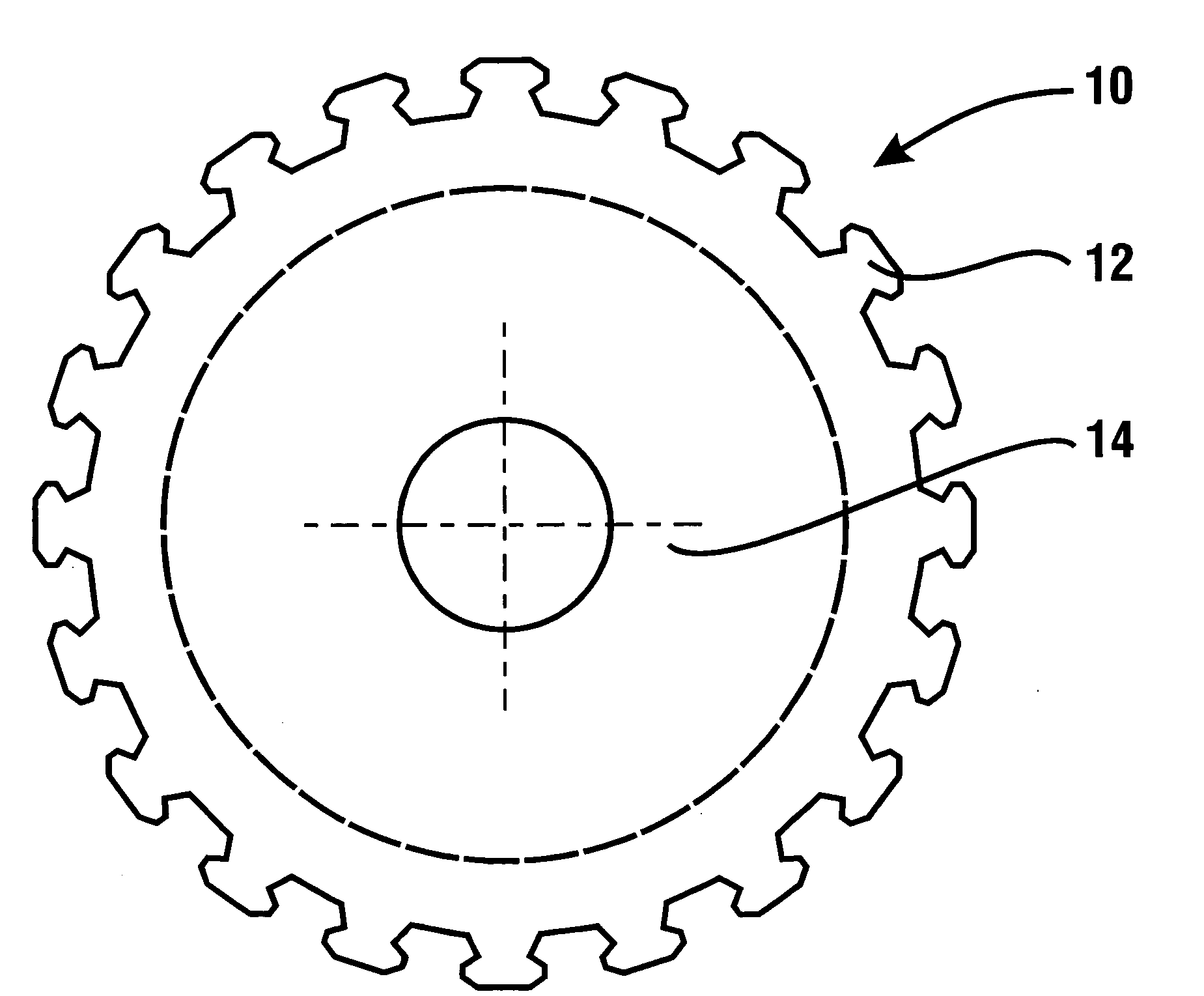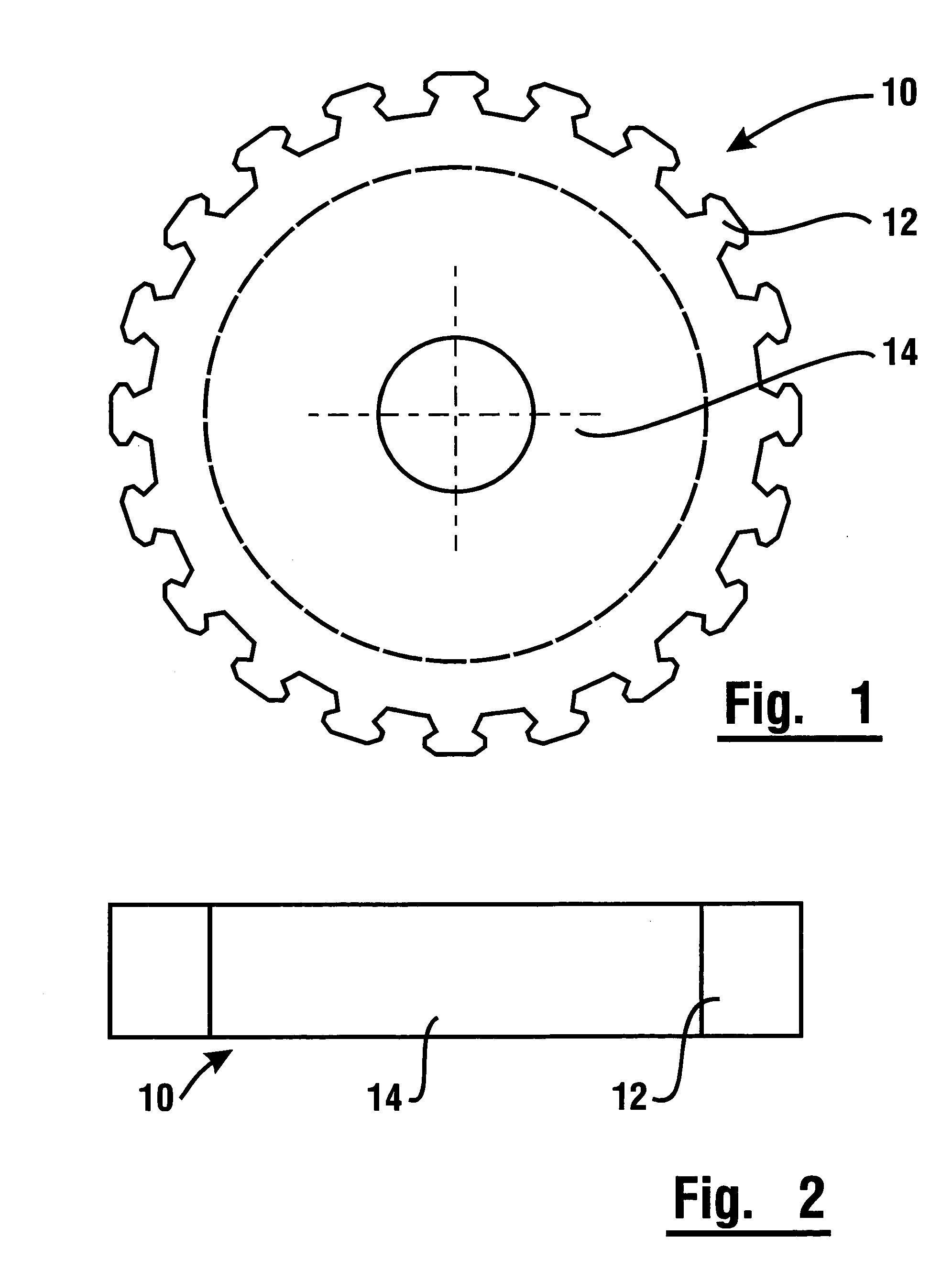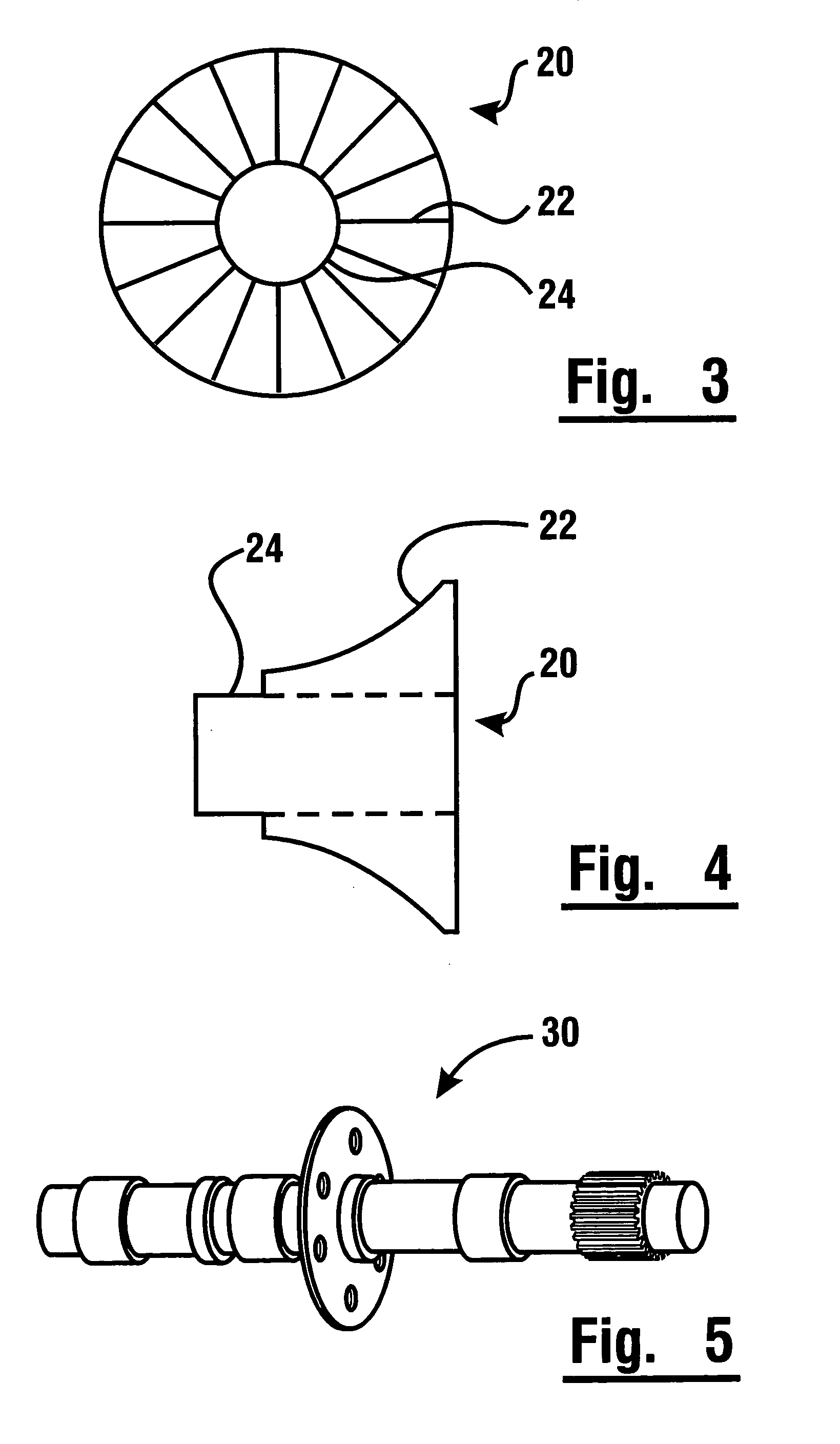Nickel base superalloy turbine disk
a superalloy, turbine disk technology, applied in the direction of wind motors with perpendicular air flow, machines/engines, climate sustainability, etc., can solve the problems of disadvantages and/or limitations of alloys, remain difficult to heat treat, difficult quench, etc., to achieve superior tensile strength, creep, fatigue crack growth resistance, and superior tensile strength. , the effect of improving the stability of the turbine disk
- Summary
- Abstract
- Description
- Claims
- Application Information
AI Technical Summary
Benefits of technology
Problems solved by technology
Method used
Image
Examples
Embodiment Construction
[0039]The composition of matter of the present invention consists essentially of, in weight percent, from about 3.0 percent to about 4.0 percent aluminum (Al), from about 0.02 percent to about 0.04 percent boron (B), from about 0.02 percent to about 0.05 percent carbon (C), from about 12.0 percent to about 14.0 percent chromium (Cr), from about 19.0 percent to about 22.0 percent cobalt (Co), from about 2.0 percent to about 3.5 percent molybdenum (Mo), from greater than about 1.0 percent to about 2.1 percent niobium (Nb), from greater than about 1.0 percent to about 2.1 percent tantalum (Ta), from about 3.0 percent to about 4.0 percent titanium (Ti), from greater than about 3.0 percent to about 5.0 percent tungsten (W), from about 0.03 percent to about 0.06 percent zirconium (Zr), and the balance essentially nickel (Ni) and incidental impurities.
[0040]An alloy including the composition was conceived having a unique combination of beneficial versatile processing properties and resulti...
PUM
| Property | Measurement | Unit |
|---|---|---|
| ultimate tensile strength | aaaaa | aaaaa |
| tensile yield strength | aaaaa | aaaaa |
| ultimate tensile strength | aaaaa | aaaaa |
Abstract
Description
Claims
Application Information
 Login to View More
Login to View More - R&D
- Intellectual Property
- Life Sciences
- Materials
- Tech Scout
- Unparalleled Data Quality
- Higher Quality Content
- 60% Fewer Hallucinations
Browse by: Latest US Patents, China's latest patents, Technical Efficacy Thesaurus, Application Domain, Technology Topic, Popular Technical Reports.
© 2025 PatSnap. All rights reserved.Legal|Privacy policy|Modern Slavery Act Transparency Statement|Sitemap|About US| Contact US: help@patsnap.com



